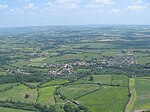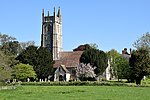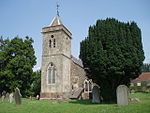Chew Valley Brewery
The Chew Valley Brewery is a microbrewery based in Pensford, Somerset, England. The brewery was opened in 2014 by Dom Lowe and Matt Stalker, after training at Masters Brewery in Wellington. The company logo uses an illustration of the Pensford Viaduct. First sales of their Pagan bitter were at the Stoke Inn in Chew Stoke, and are now available at several pubs in the Chew Valley including The Stoke Inn Chew Stoke, Druids Arms Stanton Drew, Rising Sun and George & Dragon in Pensford and The Old Bank in Keynsham. Currently two beers are brewed: Pagan (3.9% abv) brewed with Maris Otter barley and hopped with Fuggles and Golding hops. The pump clips show a tree on Pagan's Hill, Chew Stoke close to the site of the Pagans Hill Roman Temple. Druid (4.4% abv). The pump clips depict the Stanton Drew stone circles.
Excerpt from the Wikipedia article Chew Valley Brewery (License: CC BY-SA 3.0, Authors).Chew Valley Brewery
Hillcrest, Bristol
Geographical coordinates (GPS) Address Nearby Places Show on map
Geographical coordinates (GPS)
| Latitude | Longitude |
|---|---|
| N 51.3678 ° | E -2.5472 ° |
Address
Hillcrest 119
BS39 4AT Bristol
England, United Kingdom
Open on Google Maps











